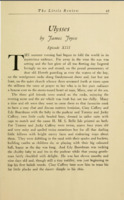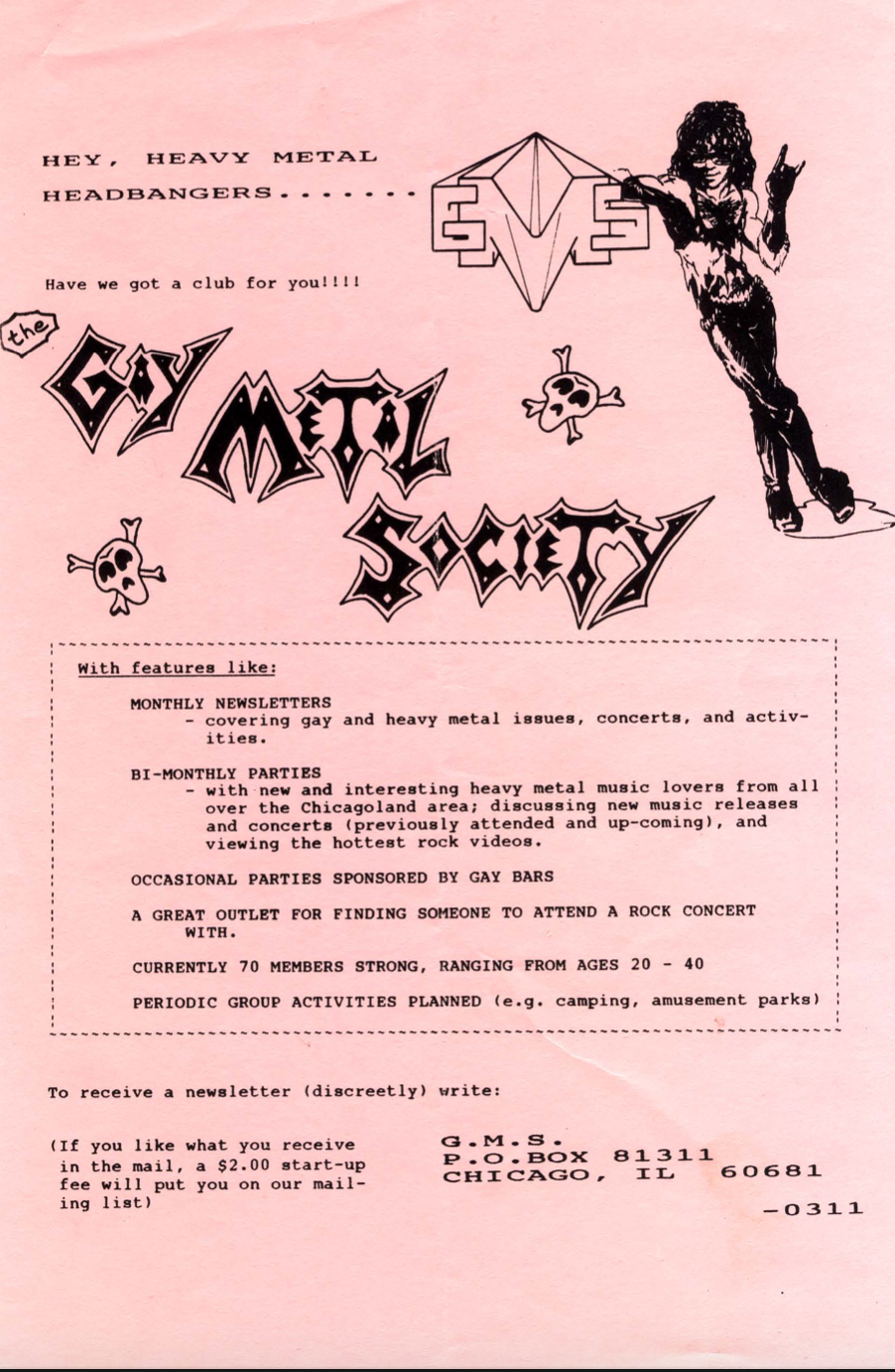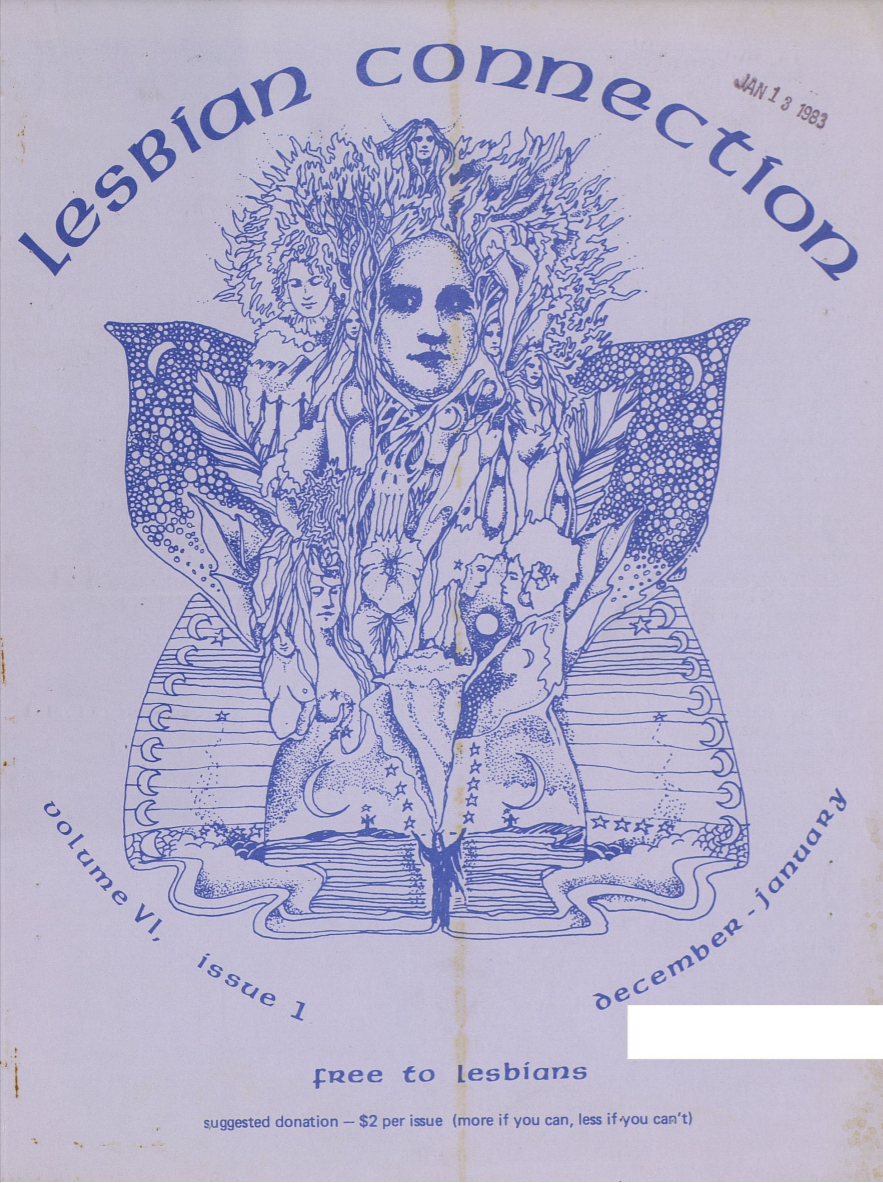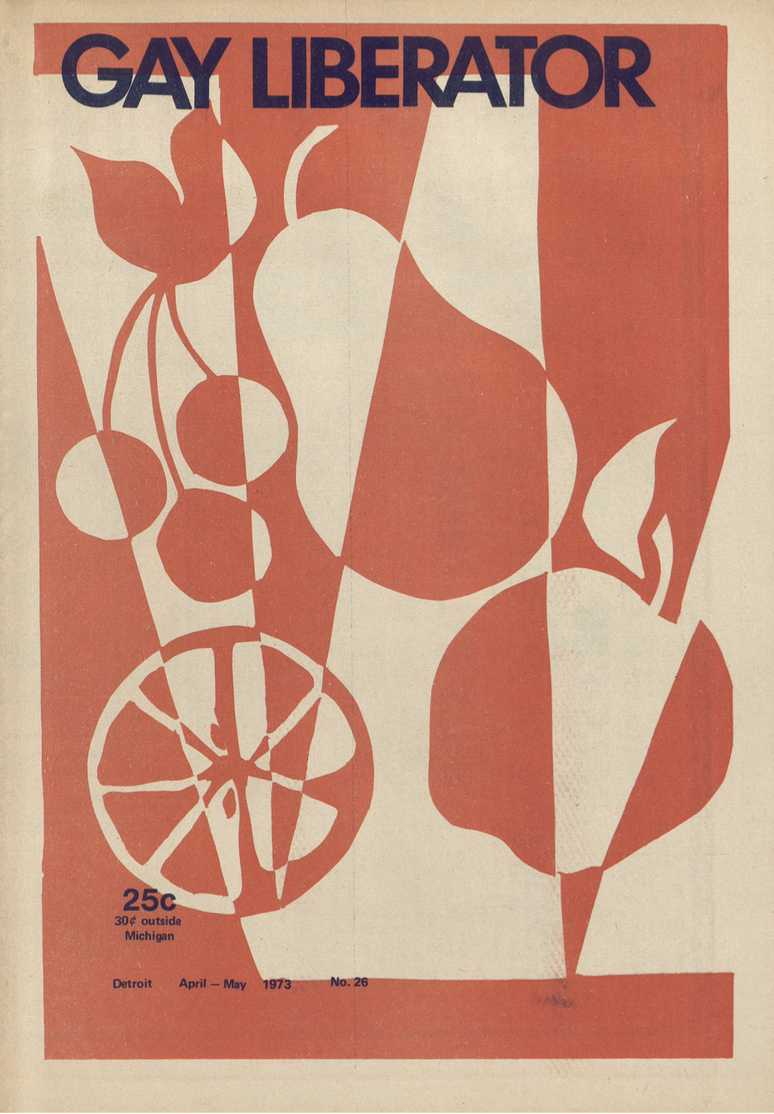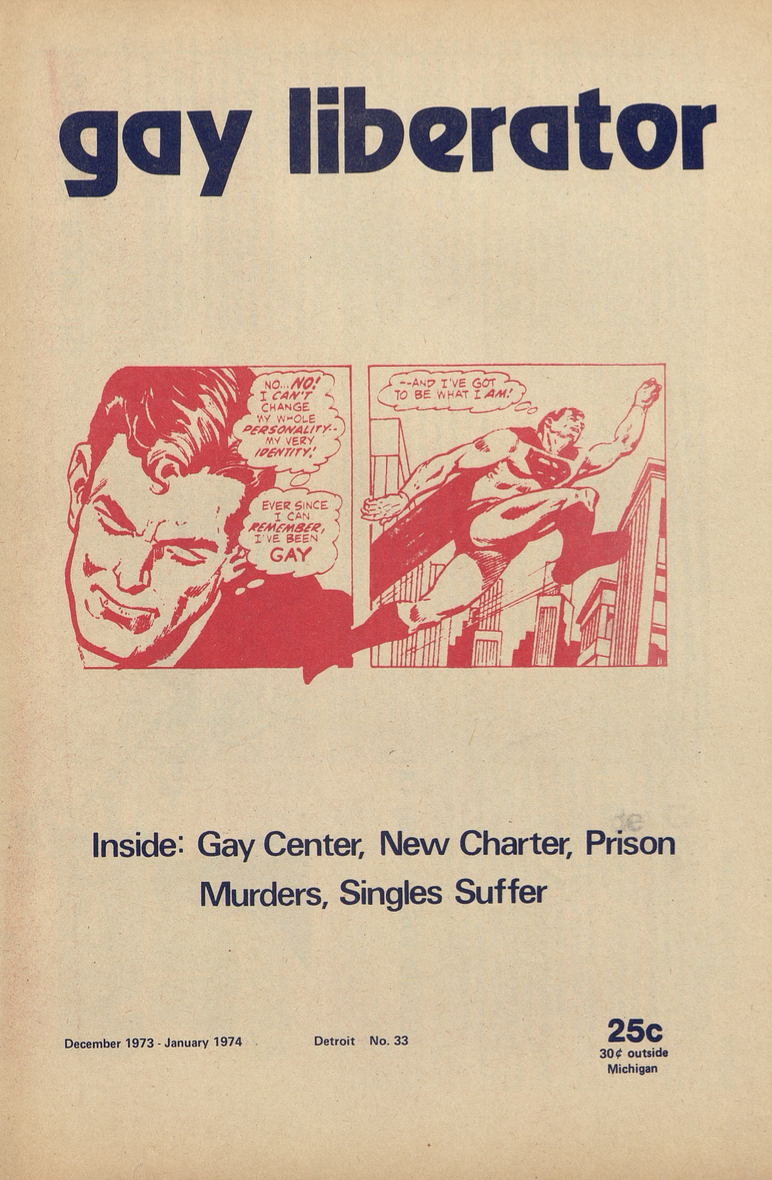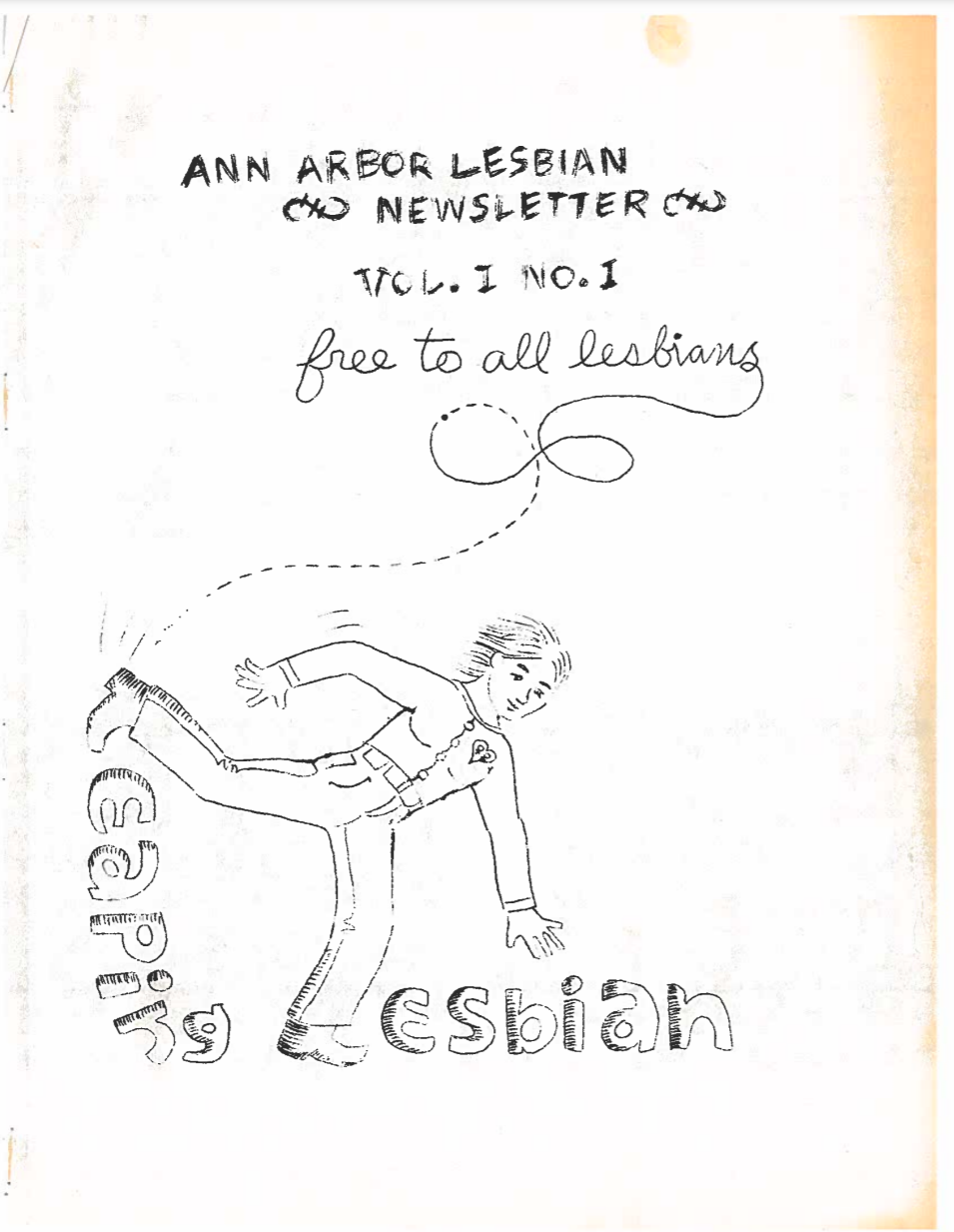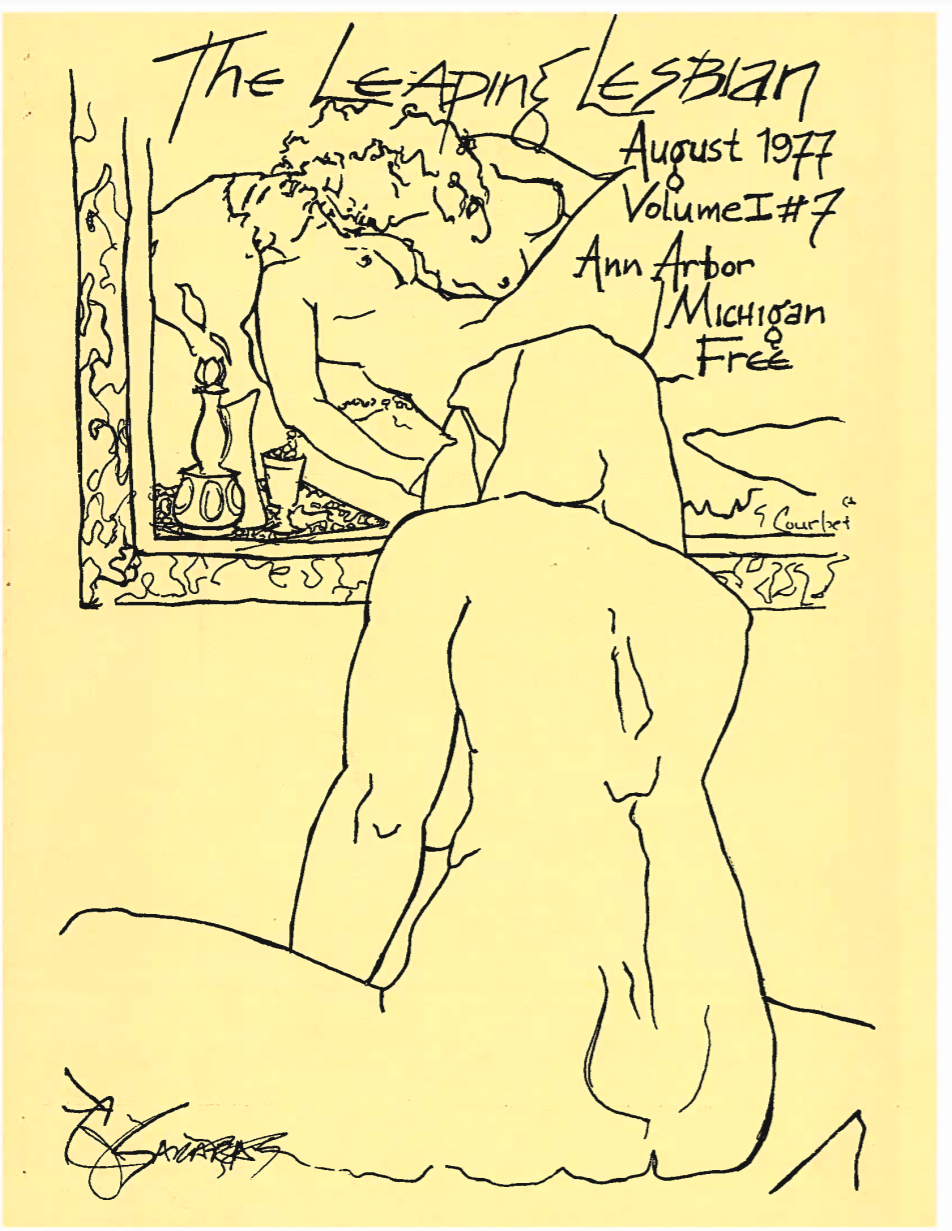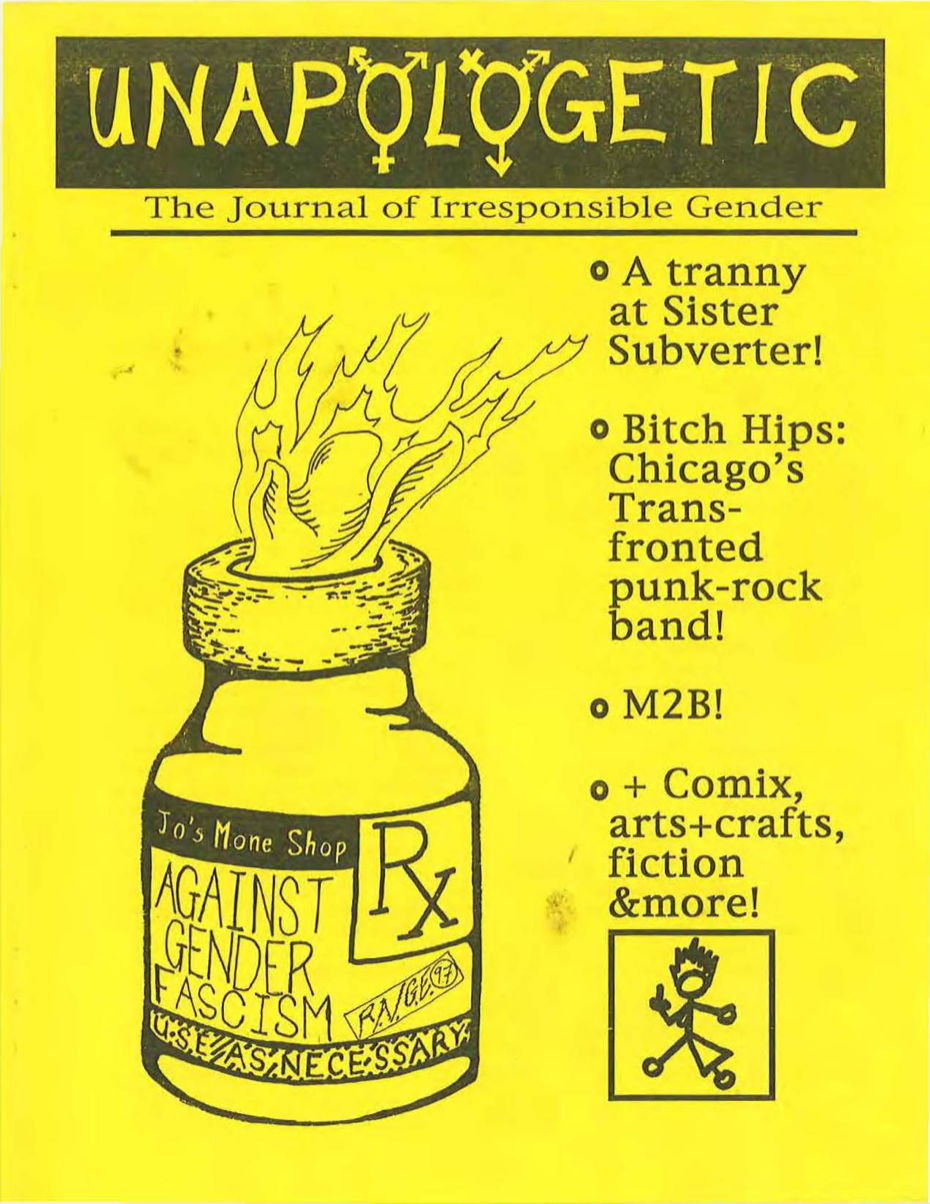LGBTQ+ Midwestern Print Culture
Item set
- Title
- LGBTQ+ Midwestern Print Culture
- Description
- All items in collection
Items
1 item set
-
Ulysses Episode 13
Digitized pages 43-50 from The Little Review Vol. 6 No. 11 which contain the first part of the thirteenth episode of James Joyce's novel Ulysses.
20 items
-
Ain't I A Woman?
Described as “a Midwest newspaper of women’s liberation,” Ain’t I a Woman? (AIAW?) began in 1970 as a project of a closed collective of the Iowa City Women’s Liberation Front. In the first issue of AIAW?, the collective explains their reasoning and goals behind the publication, explaining that "until now there have been no underground or peoples papers in Iowa City," only "the usual commercial town paper and the University paper"--neither of which could be trusted sources of salient information, "being written for the people not by the people." The collective expressed the need for women to publish their own paper outside of the mainstream media, which they described as being controlled by capitalist interests and riddled with "unmitigated sexism." Uniquely, the founders of Ain't I A Woman? rejected a hierarchical organization of roles (such as editor, assistants, and staff) in favor of a collective decision-making model for the paper's creation and publication, and claimed to maintain no "professional standards." AIAW? also aimed to increase much-needed communication between women in the Midwest, particularly between lesbians and radical women who did not benefit from the community and resources of large urban areas: "Unlike our sisters in Chicago or Detroit, who have large brown and black populations and proportionately large working class populations, most of us [in Iowa City and in smaller Midwest cities] tend to work in groups that are campus rather than community based," limiting their ability to pursue a radical feminist agenda. Although based in Iowa City, AIAW's scope encompassed the entire Midwest region, in terms of both readership and contributions to the publication. While at first, lesbians composed a minority of the AIAW?, by fall 1971 the collective became “almost all gay" due to turn over in the collective's membership as well as existing members “realizing they were gay or choosing against their heterosexual relationships" (“Finding Direction,” Ain’t I a Woman?, Oct. 15, 1971, 2). Although content dedicated to sexuality and the lesbian movement had been a part of the publication from the start, this marked a shift in the collective's stated intentions for the publication going forward. Issues of AIAW? typically included poetry, illustrations, 'letters to the editor,' ads for feminist lesbian businesses and organizations, and lengthy articles on feminist theory, lesbian issues, and radical politics. -
Ain't I A Woman?: Volume III, Number 4
This June 1973 issue of Ain't I A Woman?--described on page 1 as a "publication reflecting the opinion of...a small collective of radical gay women" in Iowa City--contains material related to the feminist self-defense movement, childcare and motherhood, violence against women, and anti-capitalism. Also included is Jane Alpert's Mother Right: A New Feminist Theory, a manifesto which Alpert originally mailed to Ms. Magazine, denouncing "the sexual oppression of the left" and detailing her conversion from militant leftist to radical feminist. -
Detroit Gay Liberator, No. 6, December 1970
This edition of the Detroit Gay Liberator highlight the refusal of the Michignan Diocese of the Episocopal Church to hear from representative of the Detroit Gay Liberation Front at its Convention. In another piece, the author accuses a local Black Panther Party affiliate of sexism and homophobia. -
Gay Community Center — Ann Arbor's only non-profit gay controlled space open to lesbians and gay males
The Ann Arbor Gay Community Center (renamed as the Jim Toy Community Center) has served as an important space for members of the LGBT community in Ann Arbor to meet, distribute resources, and program community events. This poster advertises a "Gay Hotline" as well as their many print resources including a "gay archive" and "gay/feminist newsletters, magazines, books." -
Gay Metal Society flyer
This flyer by the Chicago Gay Metal Society advertising its newsletter to potential members. The society offers bi-monthly parties, event/concert notificaitons, periodic group activities such as camping and amusement park outings, and community with other metal loving queers. -
Lavender Woman
Lavender Woman began as a recurring column in the feminist publication, The Feminist Voice, written by members of the Women's Caucus of Chicago Gay Alliance. By November 1971, Lavender Woman became an independent publication. The first issues began with only a few hundred copies, which eventually increased to a press run of 2,000 copies that consistently sold out. In the first issue of Lavender Woman, the founders expressed what they hoped the newspaper might contribute to the lesbian community in Chicago and beyond: "We, of the Lavender Woman, feel that this newspaper, written by and for Lesbians, is a powerful weapon against the society that tries, in vain, to keep us closeted and out of sight." They believed the newspaper would help to nurture the growth of the Lesbian community and increase its political consciousness, offering a space for lesbians to share their experiences, gifts, and knowledge with one another. Different women contributed to each issue, listing their names on the second page of each issue. This was an effort to include many different lesbian voices and lesbian works in the magazine. Lavender Woman referred to these submissions as "bits of themselves" affirming that the art, writing, photos, etc., being shared were personal to those who chose to share their experiences. Unlike some lesbian and feminist publications that operated out of universities and larger organizations, Lavender Woman never had an official office. Women met at each other’s apartments, where layout and paste-up happened on the living room floor, the kitchen table, or any available surface. Any lesbian who showed up to a meeting was welcome to participate as much or as little as she wished. In 1973, the Chicago Lesbian Liberation group split from Lavender Woman and began publishing its own newsletters, including two issues of The Original Lavender Woman in September and October 1974. This was one of the first significant divisions in the lesbian periodical publishing community. -
Lavender Woman: Volume 5, Number 1
This is the final issue of the lesbian feminist newspaper Lavendar Woman. Publications of Lavendar Woman typically included articles on lesbian and feminist issues, illustrations, interviews, news, and poems, with a particular focus on arts and culture. This issue contains articles about women and lesbians in the arts, poetry and fictional writing, information about other feminist lesbian periodicals, and news coverage of a recent presentation held in New York City and sponsored by the International Tribunal on Crimes Against Women. Interestingly, the creators of this issue explain their reasons for discontinuing the publication, stating "it's time to face the fact that we're dying" (p. 1). They explain the lack of staff, time, and energy required to continue to produce the newspaper, and describe being "out of touch" with the lesbian feminist identity and movement. -
Lesbian Connection
Established in 1974 by the lesbian-feminist collective Ambitious Amazons based in East Lansing Michigan, Lesbian Connection (LC or Elsie) is the longest-running publication for lesbians in the United States. The founders of LC sought to create the first free, national lesbian newspaper to encourage the growth and interconnectivity of lesbian communities across the country. "It occurred to us that no matter how many artists created lesbian albums, books, or posters, or how many activists organized lesbian groups, centers, or conferences, it all would be basically pointless if other lesbians had no way of knowing these things existed. In an attempt to fill this need for a worldwide lesbian communications network, we decided to start Lesbian Connection, a free worldwide magazine for lesbians" (Margy Lesher, editor of Lesbian Connection, from "The Lesbian Press" in Jan Whitt, Women in American Journalism: A New History p. 163. Interview with the author, Dec. 9, 2003). In an attempt to represent the diversity of lesbians across the nation, all content in Lesbian Connection is submitted by readers. The publication is essentially a readers' forum, as opposed to a more common format that combines content produced by the publishing collective with reader submissions. Upon establishment, Lesbian Connection was unique from existing publications of its genre for its nation-wide geographical scope, open submission policy, and its now international "Contact Dykes" list that made available the names and telephone numbers of women willing to provide information about lodging, restaurants, and activities to other women travelling in the area. Also uncommon at the time of LC's conception, the publication was (and still is) offered to all lesbians free of charge, with a suggested donation that has generally increased over time. As Lesher explained, "Our point was to help the lesbian movement grow. Accessibility was important. Being free was important. We didn't want a lack of money to stop anyone" (Lesher, unpublished history of Lesbian Connection, 1999, from Women in American Journalism, p. 164). Issues of Lesbian Connection typically include news of court cases, festivals, cultural events, demonstrations, and lesbian resources (such as publications, organizations, businesses, books, music, and films). It does not publish fiction, personal ads, or requests for pen pals. -
Lesbian Connection: Volume VI, Issue 1
This issue of Lesbian Connection contains articles and forums discussing the experiences of incarcerated women, sexual abuse survivors, Jewish lesbians, and bisexual women, as well as news clippings submitted by readers across the nation relevant to LGBT and women's rights. This issue also includes reports on the seventh annual Womyn's Music Festival, both celebrating the feminist music festival and critiquing the festival as disorganized and exclusionary to women with disabilities. -
Spectre: Issue 6
This is the 6th issue of the Spectre newsletters, published by the Spectre Collective of Revolutionary Separatist White Women in Ann Arbor, Michigan. Spectre was a separatist, queer, feminist publication from the 1970s. This issue features articles about ageism, classism, rape, etc., as well as letters from readers to the publisher. There are hand-written comments on this issue that act as a headings/subheadings and, in come cases, general commentary about the contents. -
The Detroit Liberator, No. 1, April 1970
The first issue of The Detroit Gay Liberator, discussing the creation of the publication, and adivce to protestor on what to do if arrested. -
The Gay Liberator
The "Detroit Liberator", as it was originally known, was launched in 1970 by the Detroit Gay Liberation Front, 9 months after Stonewall. Following the dissolution of the Detroit GLF in early 1971, the publication relaunched that September rebranded as "The Gay Liberator" and created by Pansy Press, an independent gay media collective. The publication discussed LGBTQ+ discrimination by courts, police, laws, employers, and landlords, highlighted resources for for LGBTQ+ people in Michigan, and featured poetry and art. Upon the publication's sixth anniversary in April, 1976, the publication released its final edition amid declining written contributions and support. -
The Gay Liberator: No. 33, December 1973 - January 1974
In this edition, the authors discuss affrimative action programs, but argue that they neglect LGBTQ people. Another piece highlights LGBTQ prison organizing, and another highlights the tax disadvantages that come when gay marragies are not recognizied. -
The Leaping Lesbian
Paraphrased from the University of Michigan Special Collections Finding Aid: The creative and publishing force behind the Leaping Lesbian publication was formed in December of 1976 in Ann Arbor, Michigan. This collective of four Ann Arbor women (Laura Sky Brown, Susan Fecteau, Nancy Silverrod, and Perry Silverschanz), funded by the University of Michigan Student Government, published their first newsletter early in 1977. Initially a free publication with a small monthly circulation, the Leaping Lesbian sought to fill the needs of the Ann Arbor lesbian community. In order to achieve this objective, the collective accepted and published original material from its readers, which included poetry, articles, essays and letters. Topics of submitted and published materials varied, ranging from social, political and legal issues to emotional and erotic issues. Articles covered prostitution, lesbian child custody battles, gay violence, eating disorders, lesbian performers and lesbian profiles. Within two years, it had grown from a small, monthly newsletter with a mainly local readership to a larger, bimonthly magazine maintaining a national lesbian following. In order to keep up with the growing demands, the collective asked all readers to subscribe to the magazine. The May-June 1978 issue (Vol. 2, #4) marked the last free issue of the Leaping Lesbian . Although the growth of the Leaping Lesbian reflected its success, the collective records, particularly the meeting minutes, show that the operation of the publication did not always run smoothly. Early in the collective's history, personality conflicts, heavy workloads and strained budgets added tension to its operation. Although it is not clear why the collective disbanded, or never reformed, the March 1980 (Vol. 3 #5) issue was the last Leaping Lesbian ever to be published. -
The Leaping Lesbian: Volume I, #7
The Leaping Lesbian sought to fill the needs of the Ann Arbor lesbian community. This issue contains reflections on the second annual Michigan Womyn's Music Festival and the fourth annual National Women's Music Festival. Also included is an article written by the feminist collective behind Womanspace, a local Ann Arbor bookstore with a women-only policy, an interview with a local lesbian struggling for child custody, instructions for a wiccan spell to pass the Equal Rights Amendment, and an ad for the local lesbian-feminist record label Olivia Records. -
Unapologetic #1
This 24-page zine includes comics, art, and commentary on queer and trans identity. It takes a playfull approach to queerness, celebrating moments of joy and care exist in queer communities. Anne Tagonist, the editor of the zine, writes: "This zine isn't about pain, its about laughing and hugging and then turning around raising holy hell fighting back." -
Unfortunately, history has set the record a little too straight — National Coming Out Day
This poster created by the Gay and Lesbian Community Action Council celebrates prominent cultural figures that were openly non-heterosexual for National Coming Out Day in 1988. The poster features James Baldwin, Walt Whitman, Bessie Smith, Virgina Woolf, and others.
